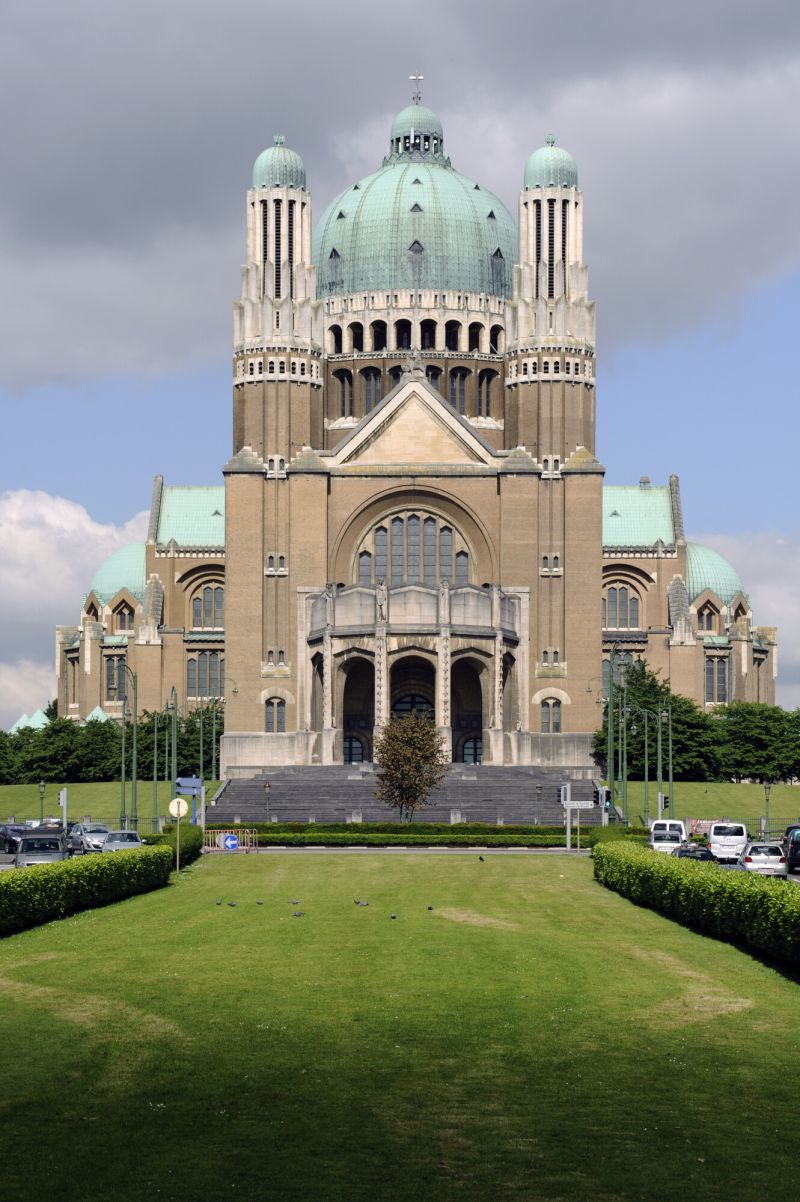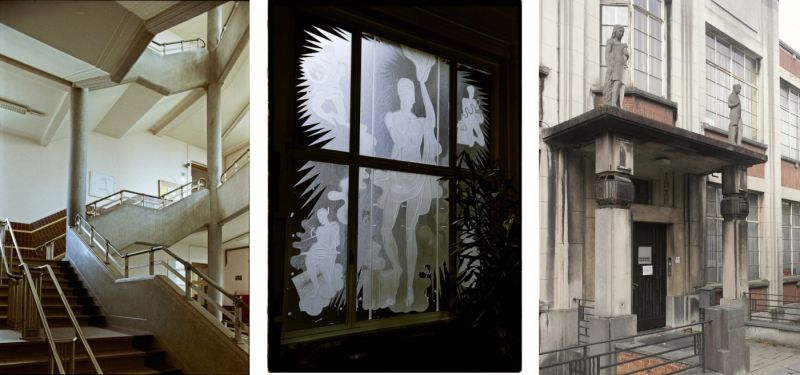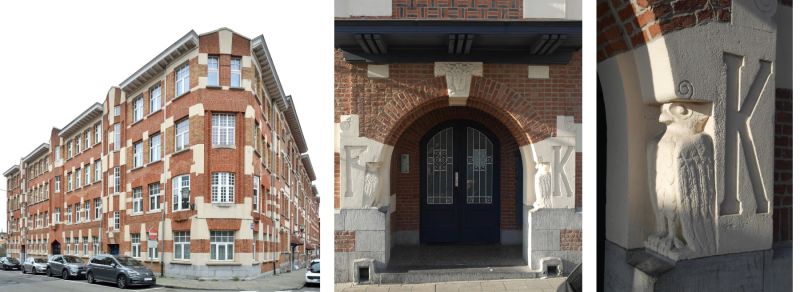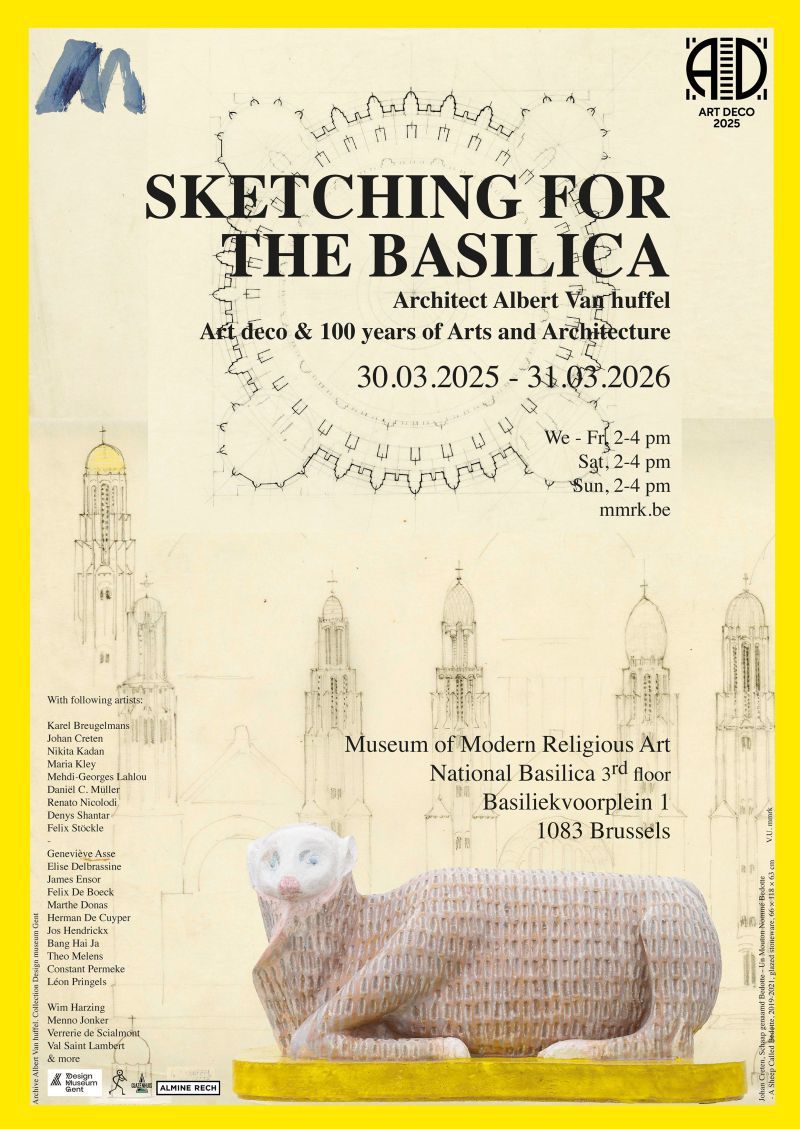#modernity2025 #artdeco2025
Urban, visit.brussels and their partners have made 2025 the year of Art Deco in Brussels, with a rich and varied programme that celebrates the centenary of this movement.
This is an opportunity for Urban to focus on specific themes related to the year's programme.
This summer, we're taking you on a journey of discovery through a less well-known part of the capital; the area dominated by the National Basilica of the Sacred Heart, straddling the municipalities of Ganshoren and Koekelberg, where several events showcase Art Deco heritage.
Ganshoren, Koekelberg and Art Deco
Separate municipalities since 1841, Ganshoren and Koekelberg reached a significant turning point in the late 19th century with the urbanisation of the Sippelberg plateau (also known as Koekelberg plateau), located on both areas. Driven by King Léopold II, an affluent residential neighbourhood was developed around the vast Elisabeth Park, connected to the centre by Boulevard Léopold II.
The world's largest Art Deco monument
To complete the grand perspective of the new boulevard, the King envisioned a monumental basilica dedicated to the Sacred Heart. Although construction began in 1905, the project was taken over in the 1920s by the architect Albert Van Huffel. He designed an Art Deco building in concrete, crowned with a vast copper-clad dome and decorated internally with blocks of glazed yellow terracotta. This colossal basilica was not fully completed until 1970. Today, the National Basilica of the Sacred heart is not only the fifth-largest church in the world, but is also recognised as the largest Art Deco monument worldwide.
Geometric gems in the shadow of the Basilica
Gradually taking shape in the first half of the 20th century, during the Interwar Period, the Basilica district embraced the Art Deco movement, a style that influenced all types of buildings.
○ Town Halls
Two examples are the town halls. The Ganshoren town hall moved in 1949 into the old Radio Conferences and Concert building, originally designed in 1939 on Avenue Charles-Quint. Meanwhile, the Koekelberg town hall, on Place Henri Vanhuffel, is a 1882 building that was completely redesigned in 1939 by the architect Henri-Aimé Jacobs.
○ Schools
Henri-Aimé Jacobs also created the imposing Athénée Royal de Koekelberg in 1933, working with his father, the famous Henri Jacobs, a specialist in school architecture. They designed an impressive institution that was both decorative and functional. Ganshoren too boasts a beautiful Art Deco educational building, La Découverte school, erected in 1938 along the Avenue Louis De Brouckère.
○ Art Deco thoroughfares
In these largely residential municipalities, entire streets were shaped by the Art Deco trend. Examples include Rue de l’Urbanisme in Ganshoren and Rue Léon Fourez in Koekelberg, constructed between 1924 and 1937 by the Koekelberg resident Arthur Pladet. Another architect who worked in the area, Julien Roggen, deliberately decorated his facades with geometric panels, examples of which can be seen at 24 Rue du Neep (1931) and 37 Avenue Jacques Sermon (1932).
○ Social housing
Social housing also embraced the Art Deco aesthetic, as seen in the Foyer Koekelbergeois, founded in 1921 and the Foyer Victoria, established in 1922 by the biscuit and chocolate company of the same name. The housing complex spanning Rue Stepman, Rue Léon Autrique and Rue du Cubisme features brick facades that are stylistically similar yet all different, designed by the architects Arthur Pladet, Albert de Valeriola and Fernand Brunfaut.
Great names in architecture
Koekelberg and Ganshoren also feature creations by some of the most prominent architects of the interwar years, including Victor Bourgeois and Jean Delhaye. In Koekelberg, Bourgeois built two manifestos of modernist architecture in 1922 and 1925: the "Bovenhuis" complex, its distinctive straight lines earning its street the name Rue du Cubisme and his own private home and studio, which is now sadly unrecognisable. In Ganshoren, Jean Delhaye focused on designing apartment buildings, including the Résidence Basilique (1938), where he himself lived and which still retains its magnificent stairwell and lift shaft.
Art Deco Brussels 2025 programme
Throughout the year, the Art Deco 2025 programme offers the public a chance to explore the many traces this movement has left on the capital, particularly in the area around the National Basilica of the Sacred Heart. Events there include two exhibitions, workshops, guided walks, a film screening and a symposium.
EXHIBITION • "Sketching for the Basilica. Albert Van huffel, Art Deco & 100 years of art and architecture"
Until 31 March 2026, the Museum of Modern Religious Art (MMRK), housed in the Basilica's dome, is hosting an exhibition showcasing previously unseen sketches by architect Van Huffel, who designed the building. They reveal his search for the ideal aesthetic for this total work of art. Alongside this, the exhibition features contemporary voices, with young artists working in ceramics, textiles and glass, presented in a dialogue with the building’s distinctive architecture.
EXHIBITION • "Jean Delhaye. Architect and Defender of Horta's work" (extended)
Until March 29, 2026, the Brunswyck/Wathelet Studio is showcasing the fascinating world of modernist architect Jean Delhaye (1908-1993), Victor Horta's final apprentice and an ardent defender of his work. First created in 2024 at LAB·AN x Hôtel van Eetvelde, the exhibition is now being shown in Ganshoren in a version enriched with documents, photos and objects from the Delhaye family. A unique opportunity to delve deeper into the legacy of an architect who left a lasting mark on the municipality between 1938 and 1960.
WORKSHOPS • "Sketching for the Basilica" with the artist Maria Kley
On Saturdays 9 and 23 August 2025, the Musée d'Art Religieux Moderne (MARM) welcomes Brussels artist Maria Kley for two workshops on working with clay. After a short visit to the "Sketching for the Basilica" exhibition for inspiration, this enthusiastic artist will guide you through working with this material full of creative possibilities.
GUIDED WALKS • "Art Deco & Modernism" in Ganshoren and Koekelberg
On Saturday 6 September 2025, set off on a journey to discover the treasures of the area around the Basilica.
Starting from the Brunswyck/Wathelet Studio, the 11 am walk will reveal Ganshoren's hidden gems of Art Deco and post-war modernism.
Starting from the Belgian Chocolate Village in Koekelberg, the 2 pm walk in three languages (FR + NL + Brusseleir), follows the route from the town hall and the Rue du Cubisme to explore the architectural jewels of Art Nouveau, Art Deco, modernism and even cubism.
→ More information for Ganshoren culture.francaise@ganshoren.brussels
→ More information for Koekelberg www.belgianchocolatevillage.be
EVENT • Short film screening "Leopold’s Sacred Heart"
On Saturday 20 September 2025, as part of the Heritage Days 2025, the Basilica will be showing a short film created in 2024 on the secret life of this monumental building. Over the course of a day, the filmmaker Philippe van der Loo takes the viewer from the deepest crypt to the neon cross that sits atop its dome, discovering its unexpected guests, including the caretaker living under the church and a caving club.
EVENT • Symposium "Albert Van Huffel and the National Basilica of the Sacred Heart"
The Basilica's partners are organising a symposium dedicated to the Ghent-born architect Albert Van Huffel (1877-1935), exploring the modernity and diversity of his work and that of his close collaborators. The event will take place on Saturday 15 November 2025 in the Vita Room in the Basilica. The grand finale will be the unveiling of the centenary model of the building by the restoration team, followed by a reception.










